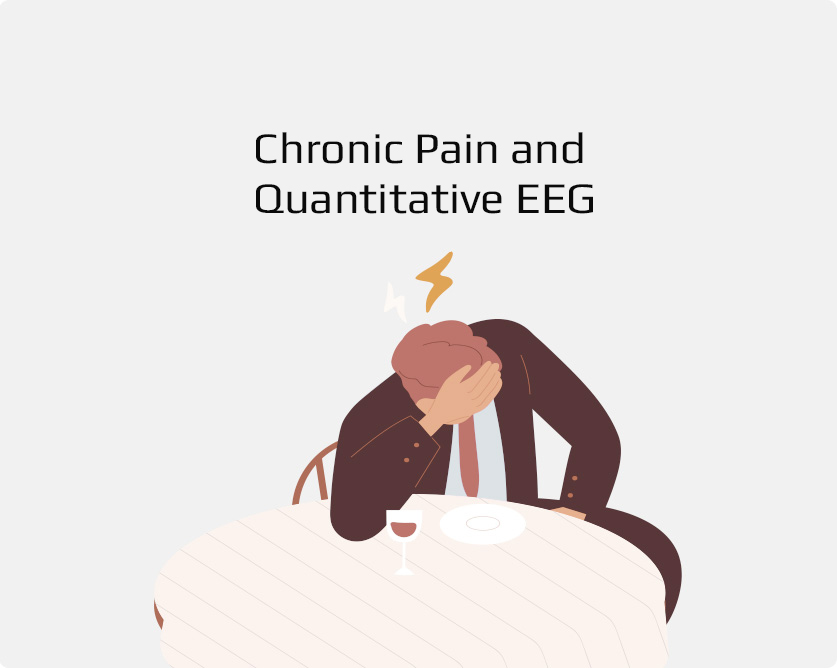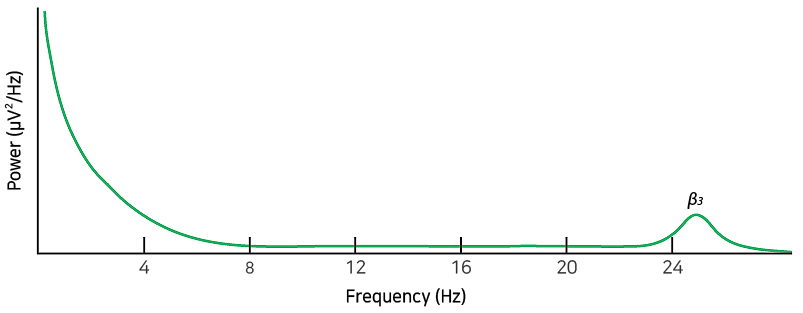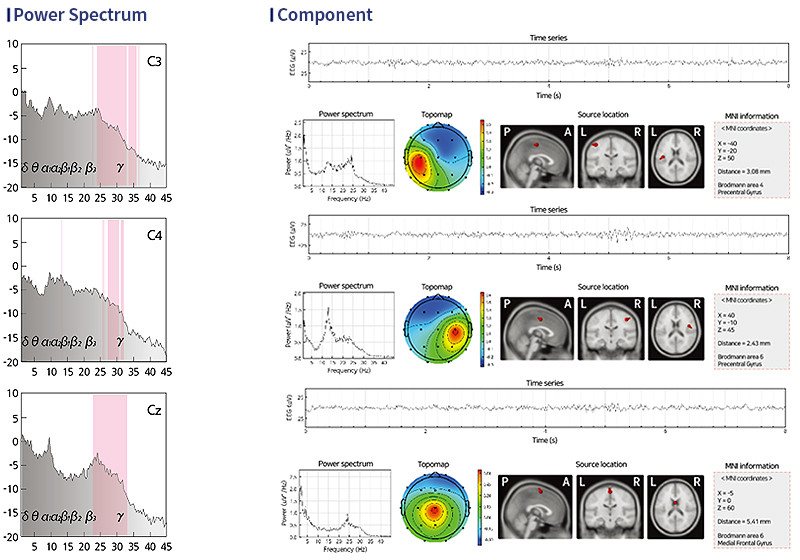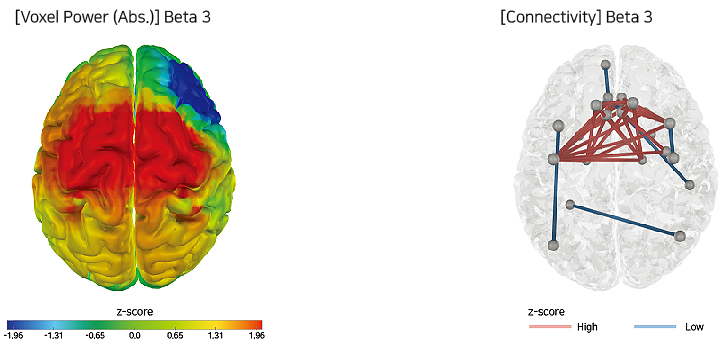
CHRONIC PAIN and QEEG
Pain is an unpleasant sensation or emotional experience associated with actual or potential bodily harm.
Pain can be divided into acute pain and chronic pain, and unlike acute pain that occurs within a short period of time
and the cause can be clarified, Chronic pain lasts for more than 6 months, leading to psychological and physical
disorders on a daily basis.
Chronic pain is known to be associated with an excess of the neurotransmitter norepinephrine.
These excesses have different effects on brain function activity, which is reflected on changes in brain waves.
According to previous studies on Quantitative EEG (QEEG), chronic pain is observed as follows.

The pattern of excessive beta 3 wavesin the parietal lobe
QEEG quantitative EEG in chronic pain is used to monitor the degree of pain, and by measuring QEEG in
advance,
it is possible to monitor that the increase in rapid wave before treatment decreases after treatment.
In addition, by using the heart rate variability (HRV) together, it is observed that among the autonomic nerves
that maintain body homeostasis, hyperactivity of the sympathetic nerve (increased LF) is alleviated, thereby
increasing the treatment success rate.
CASE REVIEW
Participant information
– Age : 45 / Male / Headache
– With frontal and occipital pain.
There are times of minor pain when the patient inhales and exhales, and the severe pain follows
when the patient tries low-intensity workout.
| Band Power – Topomap

Compared with healthy people, beta 3 waves, which is one of the fast brainwaves,
of the subject in pain has increased.

Compared with healthy people, a fast wave which is beta 3, was observed in the sensory motor region (frontal lobe)
and somatosensory association region (parietal lobe).
| 3D VIEW

Compared with healthy people, beta 3 waves and connectivity increased in the sensory motor region (frontal lobe)
and somatosensory association region (parietal lobe).










